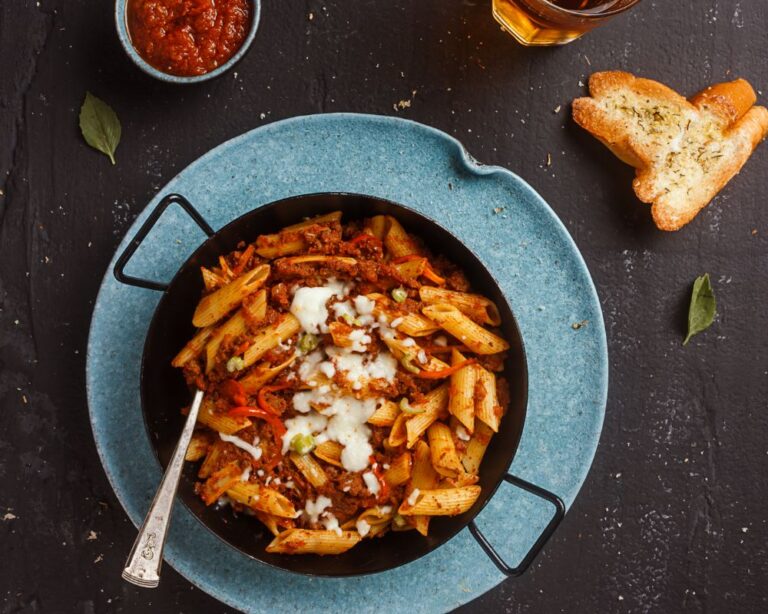Thawing a rib roast properly comprehends both safety and quality, but timing depends on the method. The refrigerator offers the safest approach, taking about 3-4 days for a full thaw, while a cold water bath can reduce that time to a few hours. Factors like size and packaging influence the process, and checking for flexibility or ice crystals helps ascertain readiness. Knowing these steps averts foodborne risks while safeguarding the roast’s texture and flavor.
Proper Storage Conditions for Rib Roasts
Proper storage conditions are key to keeping a rib roast fresh and safe before thawing. Freezing at 0°F or below prevents spoilage and locks in flavor.
Avoid leaving it at room temperature, as bacteria multiply quickly in warm conditions. Vacuum-sealed roasts last longer—up to 12 months commercially—but home freezers can only preserve quality for 6-9 months.
Tight wrapping in plastic or foil keeps water from evaporating and prevents freezer burn. Once thawing begins, never refreeze the meat, as this risks texture loss and safety issues.
Store the roast in the coldest part of the fridge, allowing several days in the fridge for gradual thawing. Appropriate handling now guarantees a juicy, safe meal later.
Refrigerator Thawing Timeline and Techniques
Thawing a rib roast in the refrigerator is the safest way to prepare it for cooking, keeping the meat at a steady, cold temperature to avoid bacteria. The process requires patience, as a typical rib roast needs 3-4 days in the refrigerator to completely thaw. A good rule is to allow 24 hours for every 5 pounds of meat. For example, a 7-pound roast will take about 48-72 hours.
To prevent drips, place the frozen roast on a tray or plate. This gradual thawing method guarantees even temperature control, reducing the risk of harmful bacteria. Initiating the process early prevents last-minute rushing. The refrigerator maintains consistency, making it the top choice for safe thawing without compromising quality or flavor.
Cold Water Bath Thawing Method
The cold water bath method offers a faster way to thaw a rib roast while keeping food safety in mind. Maintaining the right water temperature and following a clear step-by-step process guarantees the meat stays safe from bacteria.
A few time-saving tricks can also help streamline the thawing process without jeopardizing quality.
Safe Water Temperature Guidelines
Since thawing meat safely is key to avoiding foodborne illness, keeping the water temperature below 40°F is critical while using the cold water bath method. The cold water trick guarantees faster thawing than refrigeration, but strict temperature control prevents bacterial growth. A meat thermometer helps monitor the roast’s internal temperature to certify safety.
Regular water changes: Replace the water every 30 minutes to maintain a consistently cold temperature.
Sealed packaging: Keep the roast in leak-proof wrapping to avoid contamination or water absorption.
Size matters: Larger roasts (12+ pounds) require 12–24 hours, while smaller cuts (3–4 pounds) thaw in 6–9 hours.
Stay vigilant: Never let the water rise above 40°F, as warmer temperatures risk spoilage.
Proper technique verifies the rib roast thaws evenly and safely.
Step-by-Step Thawing Process
For those keen to cook a rib roast but short on time, the cold water bath method offers a quick yet safe solution. Begin by placing the frozen prime rib in a leak-proof bag, ensuring it’s fully submerged in cool water. Change the water every 30 minutes to maintain a safe temperature. A general rule is 30 minutes per pound—so a 5-pound roast thaws in about 2.5 hours. Monitor the internal temperature; it must stay below 40°F. Once thawed, pat the rib dry, season with salt and pepper, and place it fat side up in a roasting pan for even browning.
| Step | Action |
|---|---|
| 1 | Submerge sealed rib in cold water |
| 2 | Modify the water every 30 minutes |
| 3 | Check internal temperature |
| 4 | Pat dry and season before roasting |
The roast should still feel pretty firm but pliable as it becomes ready.
Time-Saving Tips & Tricks
Rarely does a busy cook have days to spare for thawing a rib roast in the fridge, but luckily, the cold water bath method speeds things up without sacrificing safety. This technique cuts thawing time to just 2-3 hours for a 5-7 lb roast. However, proper execution guarantees food safety and even thawing.
- Keep water cold: Change it every 30 minutes to prevent warming beyond 40°F.
- Use a leak-proof bag: Submerge the sealed roast to avoid water contact with the meat.
- Check the temperature: A food thermometer confirms the roast stays safely chilled.
- Plan for cooking: Once thawed, cook immediately for best results.
Factors Affecting Thawing Time
The size of the rib roast directly influences thawing time, with larger cuts requiring considerably longer periods. The chosen thawing method also plays a role, as refrigerator thawing takes days while cold water baths work faster.
Both factors must be accounted for to guarantee safe and uniform thawing.
Meat Size Matters
Size plays a big role in how long it takes to thaw a rib roast. Larger cuts, like a 14-pound roast, can take 3-4 days in the fridge, while smaller 7-pound roasts will thaw in just 2 days. Portioning influences thawing speed—dividing a large roast into smaller sections can reduce time.
- Weight matters: Thicker, heavier roasts take longer to thaw evenly.
- Freezer conditions: A tightly packed freezer slows thawing; proper airflow helps.
- Packaging: Air-tight wrapping prevents freezer burn but can slightly delay thawing.
- Safety first: Larger roasts risk uneven thawing, so monitoring internal temperature (below 40°F) is key.
For roasts over 10 pounds, a cold water bath might be needed to speed up the process safely. Never thaw at room temperature—bacteria grow quickly.
Thaw Method Impact
Ever marvel why some rib roasts thaw faster than others? The method used plays a big role. Thawing in the fridge is safest, taking 24-72 hours, but keeps the meat at a safe temperature.
Cold water thawing cuts cooking time dramatically—just submerge the roast in a leak-proof bag, changing water every 30 minutes. Room temperature thawing is risky, as the outer layers warm too fast, inviting bacteria.
The roast’s size and freezer conditions also affect timing, but the method is key. For quicker meals, cold water works, while fridge thawing suits planned cooking. Always prioritize safety—slow and steady keeps flavors intact and avoids foodborne risks. Choose wisely to balance speed and quality.
Signs of Proper Thawing Completion
Checking for signs that a rib roast has thawed sufficiently guarantees both safety and quality as preparing the meal. Proper thawing confirms the meat cooks evenly and stays flavorful. Key indicators include:
- Flexibility and Texture: The roast should feel pliable with no hard, frozen spots when pressed lightly.
- Color Assessment: The meat should appear bright red, not dull or grayish, indicating it hasn’t spoiled or thawed unevenly.
- Temperature Check: The internal temperature must remain below 40°F, verifying it hasn’t entered the danger zone.
- No Ice Crystals: Visible ice on the surface or inside means thawing isn’t complete.
A cool-to-the-touch roast with consistent color and texture verifies it’s ready for seasoning or cooking. Skipping these checks risks uneven cooking or foodborne illness.
Safety Considerations During Thawing
Why does thawing a rib roast safely matter so much? Improper thawing can lead to bacterial growth, risking foodborne illness. The USDA advises keeping meat below 40°F during thawing, either in the fridge or submerged in cold water with frequent changes.
Internal temperature monitoring guarantees the roast stays safe, using a thermometer to check for consistency. Thawing at room temperature is risky—bacteria multiply rapidly if meat sits out over two hours. Refreezing thawed meat isn’t recommended, as it degrades quality and safety.
Always place the roast on a tray to catch drips, preventing cross-contamination. Cold-water thawing expedites the process but requires vigilance to maintain safe temps. These steps ensure the rib roast remains fresh and safe for cooking.
Preparation Steps After Thawing
Several key steps guarantee a rib roast is prepared for cooking after thawing. Proper handling confirms flavor and texture remain intact, while generous seasoning elevates the final result.
- Pat dry: Use paper towels to remove excess moisture, helping the seasoning stick and promoting a crisp crust.
- Season well: Coat the roast liberally with salt, pepper, and preferred herbs, verifying even coverage for deep flavor.
- Rest uncovered: Refrigerate the seasoned roast for 12–24 hours to let flavors penetrate and the surface dry slightly.
- Bring to room temperature: Before cooking, let the roast sit out for 1–2 hours to certify even cooking.
These steps ensure the rib roast cooks evenly and develops rich, savory flavors. Proper preparation makes a noticeable difference in tenderness and taste.
Alternative Cooking Methods for Partially Frozen Roasts
Sometimes a rib roast isn’t fully thawed at the moment it’s time to cook, but that doesn’t mean the meal is ruined. Alternative cooking methods can salvage the situation with minimal fuss. A longer cook time at a lower temperature followed by a high-heat sear guarantees tenderness while preventing dryness. The reverse sear method works well, slowly heating the meat before finishing with a crisp crust. Slow braising in liquid also softens partially frozen cuts evenly, intensifying flavors without risking undercooking.
| Method | Temperature | Notes |
|---|---|---|
| Low & Slow | 250°F (120°C) | Cook longer, then sear at end. |
| Hot Oven | 375°F (190°C) | Thaws faster; monitor closely. |
| Braising | 300°F (150°C) | Adds moisture; ideal for tough cuts. |
Internal temperature checks remain essential for safety. Adjust timing as needed, taking patience into account for best results.
Optimal Seasoning and Resting Practices
Getting the seasoning and resting steps right can make the difference between a good rib roast and an unforgettable one. Proper seasoning practices guarantee deep flavor, while resting allows juices to redistribute for a tender bite.
- Season generously: Use a 2:1 mix of table salt and Lawry’s Seasoned Salt, applying 3 tablespoons for a whole roast, 1.5 for half, or 1 for a third.
- Refrigerate overnight: Rub seasoning everywhere except the ends, then chill for at least 12 hours to let flavors penetrate.
- Rest before carving: After cooking, let the roast sit 45–60 minutes so juices settle—cutting too soon dries it out.
- Slice strategically: Carve along the bones first, then slice meat north to south for even, juicy portions.
These steps confirm a perfectly seasoned, succulent roast every time.
Conclusion
Thawing a rib roast properly safeguards both safety and quality. Research supports that refrigerator thawing remains the gold standard—cold water baths work faster but require vigilance. Observing texture and temperature helps ascertain readiness. While theories circulate about quicker methods, studies confirm that rushed approaches risk bacterial growth. For best results, patience aligns with science—gradual thawing preserves flavor and texture while keeping meals safe for enjoyment.





